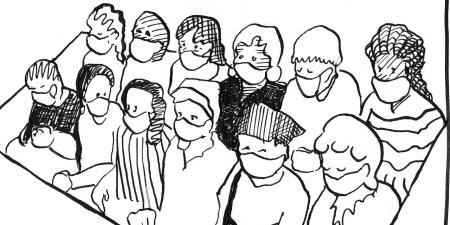Since its origins in Ancient Greece, the Hippocratic Oath has limited the teaching of medicine to people who have sworn to the “healer’s law” (νόμῳ ἰητρικῷ). The healer or physician (ἰητρὸν or ἰατρός) is called to “abstain from all intentional wrong-doing and harm.”1 And yet there are cases when harm results from the medical encounter in a phenomenon known as iatrogenesis. Whether through miscalculated risk or error, the physician (ἰατρός) becomes a source (γένεσις) of harm instead of healing.
Iatrogenesis describes harm resulting from the actions of health care professionals, including but not limited to “side effects and risks associated with the medical intervention.”2 Irrespective of individual intention, iatrogenic harm signals adverse clinical outcomes through the actions or negligence of clinicians and through their treatments.3 Although iatrogenesis tends to describe the harm precipitated by particular health care practitioners, there are also structural forms of bias and inequity that contribute to medically induced harm.
A goal of our special issue of the AMA Journal of Ethics, “Iatrogenesis and Health Inequity,” is to discuss how structural violence in medicine should be construed as an important, neglected form of iatrogenesis. Structural violence differs from other forms of harm in its injury to individuals and populations through social, cultural, political, and economic arrangements that exclude, harm, or exploit.4 In medicine, structural violence as a source of harm deserves specific attention because clinicians have professional duties to care well for all patients, and patients whose vulnerabilities are exacerbated by social determinants, including structural racism, deserve particular clinical and ethical attention because inequity in health status and access to health care is pervasive and widely documented.
Structural oppression and violence are not attributable to individual aggressors or clinician bias only, so they must be identified, named, and challenged in system-wide terms. Consider, for example, the iatrogenic effects of structural racism on algorithm-driven care that lead to differential access to transplants and COVID testing.5,6 Clinical practices, organizational policies, and individual clinicians’ speech and behaviors can exacerbate racial and ethnic health inequity, but rarely do we consider inequity as iatrogenic—that is, as caused by dysfunction in health care that is attributable to its educational and operational policies and practices. This theme issue looks to establish and launch this line of inquiry in the ethics, clinical, and public health literatures.
Ultimately, we aim to identify guiding values that have tangible impact on mitigating adverse clinical outcomes and health disparities and that increase public trust in health care. Individual scholars and activists have long spoken out on these issues, and here we have curated a small but mighty sample of literature that can serve to guide clinicians, organizations, and members of the public in identifying and responding to iatrogenic harm in clinical, educational, and research spaces in the US health care sector. Clinicians encounter individuals and populations who have sustained multiple forms of structural violence and, as such, are in a privileged place to address iatrogenic harm in their practices. Perhaps these considerations can even contribute to the ethical guidance vitally posed by the American Medical Association Code of Medical Ethics.7
References
-
Hippocrates. Oath. In: Jones WHS, trans-ed. Hippocrates Collected Works I. Harvard University Press; 1868. Accessed July 19, 2022. https://www.perseus.tufts.edu/hopper/text?doc=Hp.+Jusj.+1
- Peer RF, Shabir N. Iatrogenesis: a review on nature, extent, and distribution of healthcare hazards. J Family Med Prim Care. 2018;7(2):309-314.
- Darchy B, Le Mière E, Figuérédo B, Bavoux E, Domart Y. Iatrogenic diseases as a reason for admission to the intensive care unit: incidence, causes, and consequences. Arch Intern Med. 1999;159(1):71-78.
- Sossenheimer PH, Andersen MJ Jr, Clermont MH, Hoppenot CV, Palma AA, Rogers SO Jr. Structural violence and trauma outcomes: an ethical framework for practical solutions. J Am Coll Surg. 2018;227(5):537-542.
-
Chen IY, Szolovits P, Ghassemi M. Can AI help reduce disparities in general medical and mental health care? AMA J Ethics. 2019;21(2):E167-E179.
- Gray DM II, Anyane-Yeboa A, Balzora S, Issaka RB, May FP. COVID-19 and the other pandemic: populations made vulnerable by systemic inequity. Nat Rev Gastroenterol Hepatol. 2020;17(9):520-522.
-
American Medical Association. Code of Medical Ethics. American Medical Association; 2016.



